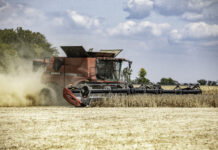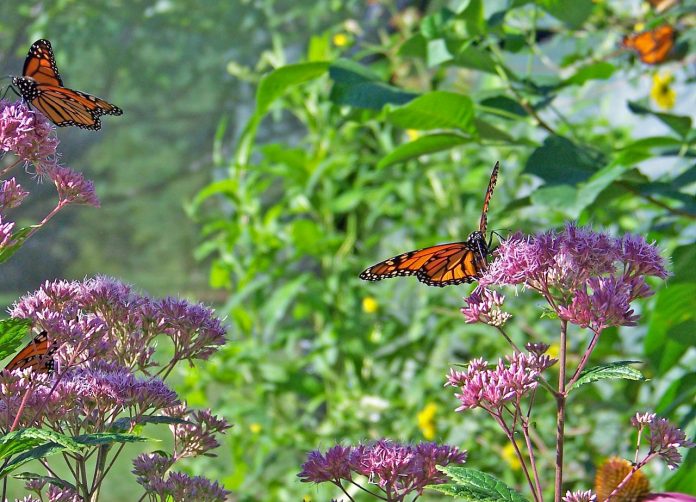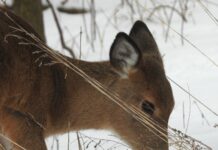It happened again! Like most everyone, I drive a routine “path” to work every day.
I’m lucky enough to live in the country and have a short commute, and as I drive, I take in the beautiful scenery. So yes, I notice things.
I notice the simple things … like the sunrise, fields, ditches, trees, borders, crops and when it’s a drought or when it rains — how it affects the environment. But lately, on my drive, I noticed something that really disturbed me.
Lately, I have been thrilled about different areas that had milkweed growing along the field’s edge, and alongside the ditch. I was delighted that milkweed was making a comeback.
And then … to my horror, all those milkweed plants, ragweed, and other wildflowers growing along the ditch near the soybean field that I once admired were brush hogged. It was awful. For no reason, I thought.
Although I was still struggling to see a lot of Monarch butterflies, my thoughts were “If you built it, they will come.” So much for the building.
And so we take one step forward and two steps back.
Not a weed
For those who don’t know what milkweed is or the significance of it, let me briefly fill you in. Monarchs cannot survive without milkweed; their caterpillars only eat milkweed plants and monarch butterflies need milkweed to lay their eggs.
Experts estimate that Monarchs have diminished by 90 percent over the past 20 years. Although there are a multitude of factors to blame, it’s pretty simple that if a butterfly can’t lay eggs on its host plant, it will be hard to repopulate.
Here in Ohio, we should be seeing a very important generation of Monarch Butterflies. By mid-August, the first members of the migratory generation will emerge in the north. These butterflies are the great-great-grandchildren of the monarchs that left Mexico last spring.
They have a long and challenging life ahead: they will migrate to Mexico this fall, survive the winter, and return in spring 2018 to begin the breeding season anew. So, if you want to help these beautiful winged creatures out … please don’t mow!
Leave the milkweed
Especially don’t mow the milkweed and the food, or nectar that they will need from the other wildflowers on their magnificent migration to Mexico. Visit FMI https://journeynorth.org/monarchs NO Mow Zone.
Why, I wonder, did that ditch get brush hogged? Who did it? Was it the county, township or village … or that farmer? Same thing with the stands of milkweed by the edge of the crop fields. I wonder what was the purpose?
Does the person think it looks better? In my opinion, we have a tendency to over-mow. Needless mowing. I’m talking about ditches, field edges, borders, stream banks, etc. Just let it grow.
In fact, taller grasses produce more live roots providing some drought resilience, helping to shade out some weeds.
They also have the added benefit of some wildlife habitat, especially certain pollinator species, and we could use these chemical-free niches wherever we can get them.
Some other added benefits of not mowing: conserving fuel, saving time and money, preventing mower accidents, buffering noise, (also from not listening to an engine running), diverting floodwaters, stabilizing stream banks and ditches, creating oxygen, filtering air rather than causing more emissions from mowing, and biodiversity.
There are areas that we should just let nature be what it is, and allow the “weeds” to help our pollinators, birds, and wildlife thrive without fear of being mowed for looks.
Wait a second … or a couple of months! If you want to be green, but still can’t stand the thought of a “brushy” area, or like many people I know that are mower crazy … please just hang in there.
Wait it out
I recently had a call from a very nice gentleman who wanted to know when he could mow his field, and he had a bunch of milkweed in it. Luckily I advised him to wait. This was not the time to mow it.
Play is safe; wait until mid-October if you must. The Monarchs need nectar. They suck up nectar with their tongue, called a proboscis, from plants like goldenrod, thistle, and wild carrot, and crops like red clover and alfalfa.
Monarchs will also seek out nectar from poisonous plants like milkweed. Those wildflowers and grasses also benefit native bees, birds and many other wild animals. If you can, don’t mow, let it grow. Enjoy the summer!














Most cities have ordinances against high grass and weeds. Farmers have stronger weed killers their crops can resist. Killing more weeds than they use to. People do not make a cautious effort to include milk weed in a flower bed or garden.